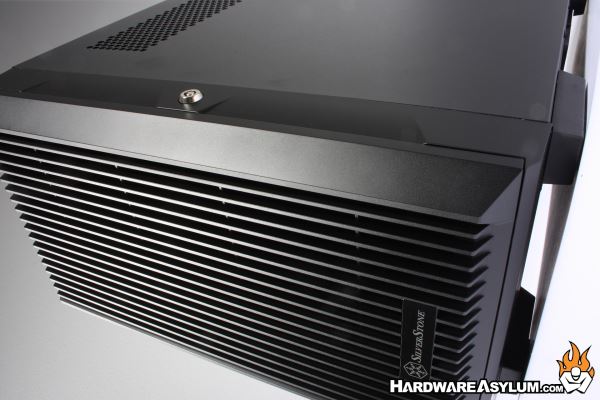SilverStone CS382 Micro-ATX NAS Chassis Review
Author: Dennis GarciaIntroduction
Did you know that you can build a computer to do more than play games?? I know, it sounds crazy but, you can build computers to do any number of specialized tasks and there is often custom hardware available to support those tasks. Overclocking is a prime example where hardware makers built boards and video cards to support the power demands of overclocking and even repositioned components to support LN2 containers and phase setups. Crypto miners are another novel example, they were building data processing workstations and servers using specialized motherboards with extra PCI Express slots and often an extremely low powered CPU. The intent was to run as many GPUs as possible just to crunch numbers. NVIDIA does something similar in their AI data centers but, that is a story for a different time.

In this review we will be looking at the SilverStone CS382 NAS Chassis. As the name suggests this case is designed for systems that will act as a Network Attached Storage. We have talked about NAS systems on the Hardware Asylum Podcast as a cost-effective way to do routine data backups and long-term data storage of your important data including images, movies and even resumes and recipes. Basically, anything you want to keep can now be safely stored without taking up space on your primary computer, phone or tablet.
A NAS, or Network Attached Storage, is a server that sits on your local area network. From there you can access the machine remotely to either store or retrieve data. Think of it as a “local” cloud that you have full control over, doesn’t have a direct monthly cost or the dangers of losing your data if you forget to pay the bill. A NAS is also a multi-purpose server, most will people will use them for remote data storage but, they can also be application servers hosting various applications such as Plex, Wordpress and even Transmission, if you are into that sort of thing.
Most commercial NAS boxes like the ASUSTOR AS-304T that we reviewed several years ago stop at the storage and application stage since they are designed to also run from an app store hosted by the manufacturer. This helps them better support the hardware while still giving customers more than they will ever need.
For those looking to get more involved in their NAS adventure you have two choices. You can repurpose an old computer and then install a commercial or open-source NAS software package. Or, you can take the enthusiast approach and do everything yourself. This will allow you to create the perfect system for your specific niche. Personally, I have been running a NAS style server for YEARS which has been built and rebuilt about as often as I swap out desktop components on my main rig. The server is my primary development mirror for Hardwareasylum.com, it runs a Hypervisor, Plex, several Game Servers, Build Server, Video Encoding, Private Cloud and is the primary data storage system for that data and games needed to run Ninjalane Labs. I’ve even built in a nightly backup process to ensure that everything I want to keep, stays safe for as long as I need it.
Of course, my situation extends beyond what most commercial NAS solutions can provide and is why I opted to build my own. The build required some specialized hardware and tapped into my considerable IT and tech knowledge but, was worth it as it saves me a TON of money if I had replaced everything with commercial offerings.
This is where the CS382 NAS Chassis solution from SilverStone can be of a real benefit for anyone wanting to build their own private NAS or even a fileserver for clients and other small businesses.

